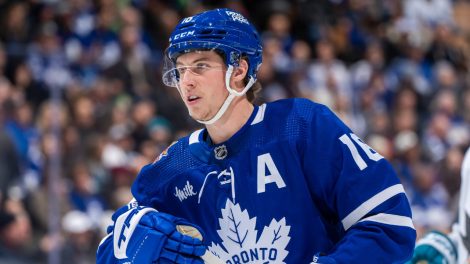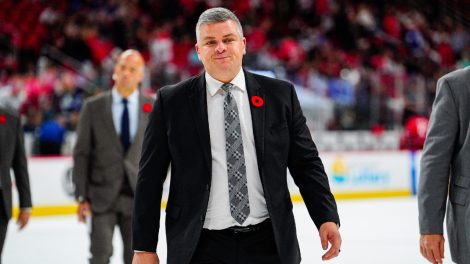With the signing of Patrick Marleau to a big-money, three-year deal, the Toronto Maple Leafs have sent a signal that the rebuild is officially over and they feel they’re ready to compete right now.
Giving a soon-to-be 38-year-old forward to a three-year deal worth $6.25 million per season is easily the biggest risk the Leafs have made under general manager Lou Lamoriello, however that risk is mitigated slightly by the fact that Auston Matthews and Mitch Marner will remain on their entry-level contracts for two of those three years.
Toronto also gets to shelve Nathan Horton and Joffrey Lupul on long-term injured reserve, giving it $10.55 million in extra flexibility over the salary cap. Lupul comes off the books entirely next summer, and the Leafs will have the options of letting James van Riemsdyk, Tyler Bozak, and Leo Komarov head to unrestricted free agency.
So looking at the Marleau contract, it’s probably a bad gamble based on age alone, but considering the context the Leafs are dealing with, the inherent risk isn’t nearly as bad as it would be for most teams.
But what exactly does Marleau bring to the table for that much money at 38?

There is some question about whether Marleau’s offence will continue at a high level this late in his career, and there will likely be some decline, but overall he still looks very solid offensively. His shot rate has dropped from his prime years, but due to his speed and offensive instincts he’s able to put up high levels of high danger scoring chances from the inner-slot, and chances from the slot overall.
What’s interesting about Marleau is that even though his even-strength assist numbers have been pretty rough the past couple seasons, his passing game has remained decidedly above average, and he creates scoring chances for his teammates at a second-line rate.
Marleau’s 52 goals over the last two seasons ranks 30th in the entire NHL over that time, and his 33 goals at even strength ranks 50th in the NHL. Both those marks are first-line worthy numbers, and for a high-percentage shooter his goal scoring doesn’t seem to be disappearing yet.
Some will be tempted to write Marleau’s production off as a product of Joe Thornton, but he’s barely played with Thornton over the previous two seasons. The top two picks from the 1997 NHL Draft were on the ice together for just 18.49 per cent of Marleau’s even-strength ice time, and only 18.18 per cent of Marleau’s even-strength goals were scored in that time.
[relatedlinks]
In fact Marleau’s most common linemate over the last two seasons has been Joel Ward, who is a great player but not really a driver of offence. I would argue that Marleau has very clearly been the biggest driver of his own success recently, a promising sign for a player of his age.
With a player of Marleau’s age there’s always going to be the risk of a catastrophic drop-off in play, and he’s certainly not a possession driver like he was even three years ago, but he’s a first-line level goal scorer, and second-line level playmaker. If he’s given a support role on say, Matthews’ wing instead of Zach Hyman, there’s every reason to think he’s going to be a great signing for at least one of those three years, maybe two.
This is the kind of risk a team like the Leafs can afford to make because of the cheap stars on entry-level contracts throughout their forward lineup.








